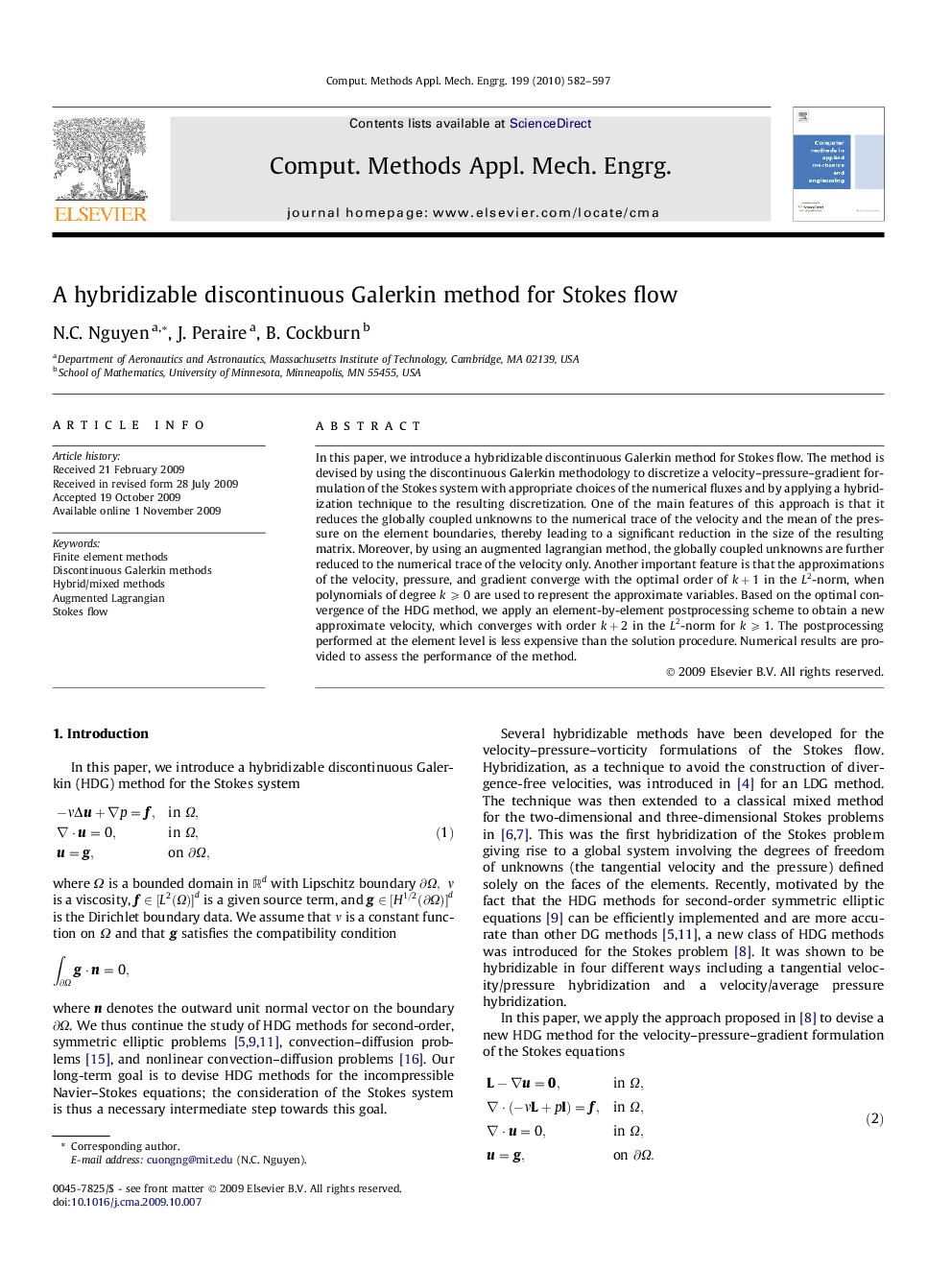| Article ID | Journal | Published Year | Pages | File Type |
|---|---|---|---|---|
| 498896 | Computer Methods in Applied Mechanics and Engineering | 2010 | 16 Pages |
In this paper, we introduce a hybridizable discontinuous Galerkin method for Stokes flow. The method is devised by using the discontinuous Galerkin methodology to discretize a velocity–pressure–gradient formulation of the Stokes system with appropriate choices of the numerical fluxes and by applying a hybridization technique to the resulting discretization. One of the main features of this approach is that it reduces the globally coupled unknowns to the numerical trace of the velocity and the mean of the pressure on the element boundaries, thereby leading to a significant reduction in the size of the resulting matrix. Moreover, by using an augmented lagrangian method, the globally coupled unknowns are further reduced to the numerical trace of the velocity only. Another important feature is that the approximations of the velocity, pressure, and gradient converge with the optimal order of k+1k+1 in the L2L2-norm, when polynomials of degree k⩾0k⩾0 are used to represent the approximate variables. Based on the optimal convergence of the HDG method, we apply an element-by-element postprocessing scheme to obtain a new approximate velocity, which converges with order k+2k+2 in the L2L2-norm for k⩾1k⩾1. The postprocessing performed at the element level is less expensive than the solution procedure. Numerical results are provided to assess the performance of the method.
